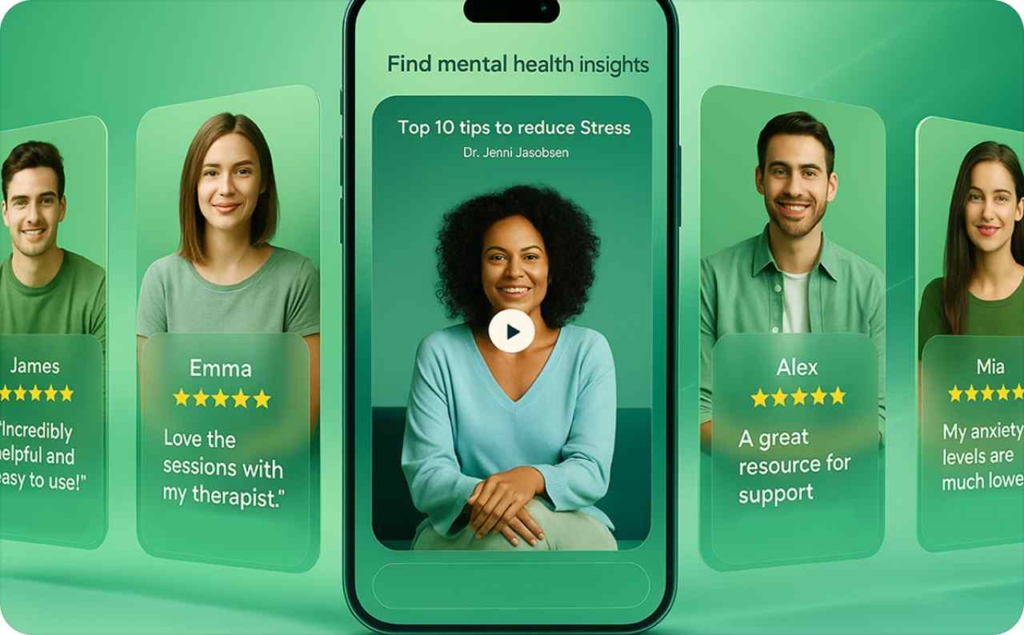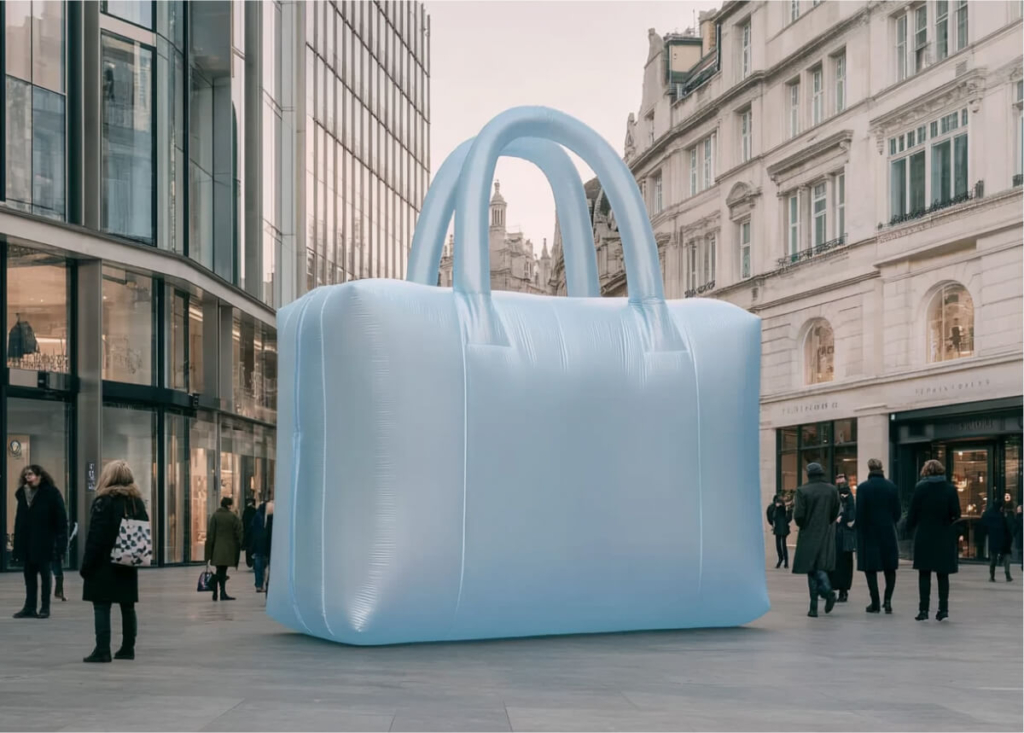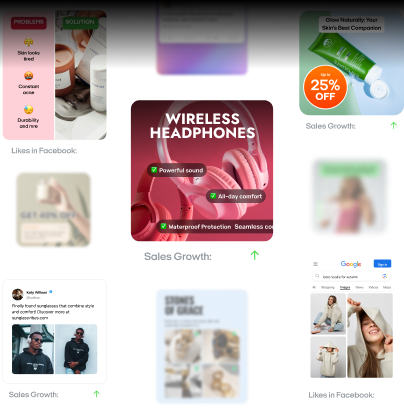Traditional advertising vs. AI ads: What’s really driving results in 2025?
Who’s winning the ad game in 2025 humans or machines? Uncover the data that reveals what’s truly driving results this year.
Tired of spending thousands on ads and having no idea if they worked? You run a billboard, place a print ad, maybe even sponsor a local event, but there’s no way to know if any of it actually brought in customers. Meanwhile, your competitors are using AI-powered ads that track clicks, predict behavior, and adjust in real time.
According to Gartner, search engines will see a 25% drop in traffic by 2026 as people rely more on AI chatbots and virtual agents. That means old-school methods could soon miss the mark.
In this guide, we’ll break down the key differences between traditional advertising and AI ads, and help you choose where to invest your marketing budget for real ROI.
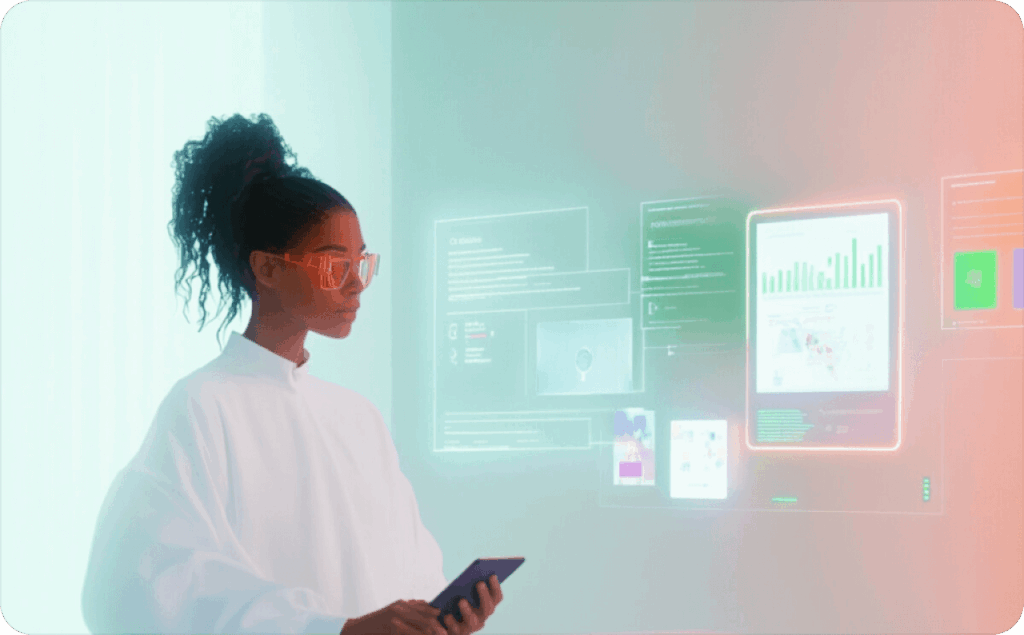
Why old-school ads could be costing you more than you think
Studies show many companies waste about 26% of their ad budgets on campaigns that never reach the right audience. That’s a big hit for any marketing plan. Plus, market fragmentation and digital disruption make it harder than ever to stand out.
TV, radio, and print can be pricey and slow to update. If you buy a costly billboard but your ideal shoppers mostly scroll on social media, it’s like shouting into an empty room.
For example, imagine you run a local bakery. You invest $2,000 in a billboard that stays up for a month, yet you see almost no increase in foot traffic.
Those dollars could have been spent targeting local foodies online — people who actually look for “best cupcakes near me.” That’s a missed chance to boost revenue.
What’s the difference between traditional and AI ads?
The biggest difference is how they adapt. Traditional ads, like TV spots, newspaper spreads, or billboards, are static. Once published, they can’t be changed without extra time and cost. You pay up front and hope they reach the right people.
AI ads, on the other hand, adjust in real time. They use data analytics and automation to track performance and update the message as it runs.
This makes them more flexible, efficient, and measurable. In fact, only 37% of marketers use AI advertising, even though global AI ad revenues are expected to grow by $80 billion from 2023 to 2027.
That growth shows how fast the industry is shifting toward tools that offer better ROI. It is a real proof that your ad dollars lead to results.
This shift isn’t just about tech, it’s part of a bigger evolution in media buying. Marketers want more than impressions; they want every dollar to be trackable, testable, and tied to profit. AI ads generator tools makes that possible.
How AI ads give you real-time results
AI-driven advertising detects trends and adjusts on the fly. It reads consumer behavior, like browsing history or location, and shows ads to people who truly care. This kind of personalization prevents wasted spend and drives higher engagement.
Tools like Google Ads or Meta Advantage rely on programmatic advertising, which automatically bids for ad space and tests different versions of your ad. You get fast feedback, sometimes within hours, instead of waiting weeks to see results.
Traditional marketing often lacks this real-time measurement, so you never know which parts of your campaign succeed. It’s no surprise that more brands are doing AI ad creative testing instead of sticking with old-school ads.
Real-time optimization, better targeting, and quick data insights keep you in tune with evolving consumer trends. If you want ads that actually deliver, it might be time to explore the AI-driven ad revolution and finally say goodbye to guesswork.
Is traditional advertising still worth it?
Let’s break down traditional advertising on how it works, what it costs, and whether it still earns results in today’s digital world.
What does traditional advertising really mean?
Traditional advertising includes offline marketing like TV commercials, radio spots, print ads, and billboards. These are known as legacy media channels. They aim for broad reach and strong brand recall by showing your message to large groups at once.
Most of these ads are static: once printed, aired, or installed, they can’t be changed. That’s why they’re called static targeting. You don’t get real-time feedback, and updating a message takes time and extra money.
The main types of traditional advertising
Understanding the types of traditional advertising helps you decide what might work for your business.
Broadcast advertising
TV ads are perfect for emotional storytelling. A Super Bowl commercial, for example, reaches over 100 million people and creates national buzz. But it can cost over $6 million for 30 seconds. That’s not realistic for most small businesses.
Radio spots are more affordable — between $500 and $5,000 depending on the station and time slot. They reach local markets but don’t offer precise audience segmentation.
Print advertising
Newspapers and magazines offer trust and credibility. A full-page ad in a local magazine may cost $750 and reach a niche audience. But readership is declining, and tracking ROI is hard.
Billboards offer high visibility. You’ll get thousands of ad impressions, but you won’t know who actually took action. And you can’t test different versions like you can with digital ads.
Event-based advertising
Trade shows help you connect face-to-face. You can run demos, hand out materials, and collect leads. Booths can cost a few hundred to a few thousand dollars, depending on the event.
Sponsorships tie your brand to local teams, concerts, or festivals. This builds trust and positive emotion. If the audience loves the event, they may start liking your brand too.
What are the real benefits of traditional ads?
Traditional ads still work for brand awareness and offline reach. People often trust what they see in print or on TV. A well-placed billboard or radio spot can make your brand feel more established.
These channels are great for products that appeal to older demographics or people who don’t spend much time online. Plus, physical ads like mailers or posters create a sense of legitimacy that digital ads sometimes lack.
Where do traditional ads fall short?
The biggest downside is cost. A TV ad can cost thousands — sometimes millions. And once the ad runs, there’s no way to edit it. That’s risky if trends or customer needs change fast.
Another issue is measurement. You don’t get real-time campaign metrics. You don’t know who saw the ad, clicked, or made a purchase. That’s a problem if you’re used to tracking cost per thousand or return on ad spend.
If your goal is fast feedback and targeting based on behavior, these offline marketing channels won’t give you what AI advertising can.
Should you still use traditional ads today?
Yes, but only if they fit your audience and budget. If you’re aiming for offline brand exposure, they still have value. A billboard or a trade show booth can leave a strong impression, especially in a local community.
That said, their lack of personalization and real-time feedback makes them less effective for fast-moving campaigns. Up next, we’ll show how AI advertising strategies fixes those problems with smarter targeting, flexible formats, and better ROI tracking.
Ready for smarter ads? See how AI advertising transforms your budget
Picture running ads that learn from each click. AI advertising does this by using machine learning for ads and predictive analytics to deliver the best offer to each viewer. It removes guesswork and helps you spend your budget wisely.
How to know if AI advertising is right for you?
If you’ve dealt with cart abandoners or wasted ad spend, AI can retarget those shoppers with custom deals. Many tools are now user-friendly, so you don’t need a big tech background.
For instance, Zeely AI lets you make ads in minutes and see real-time results in one dashboard.
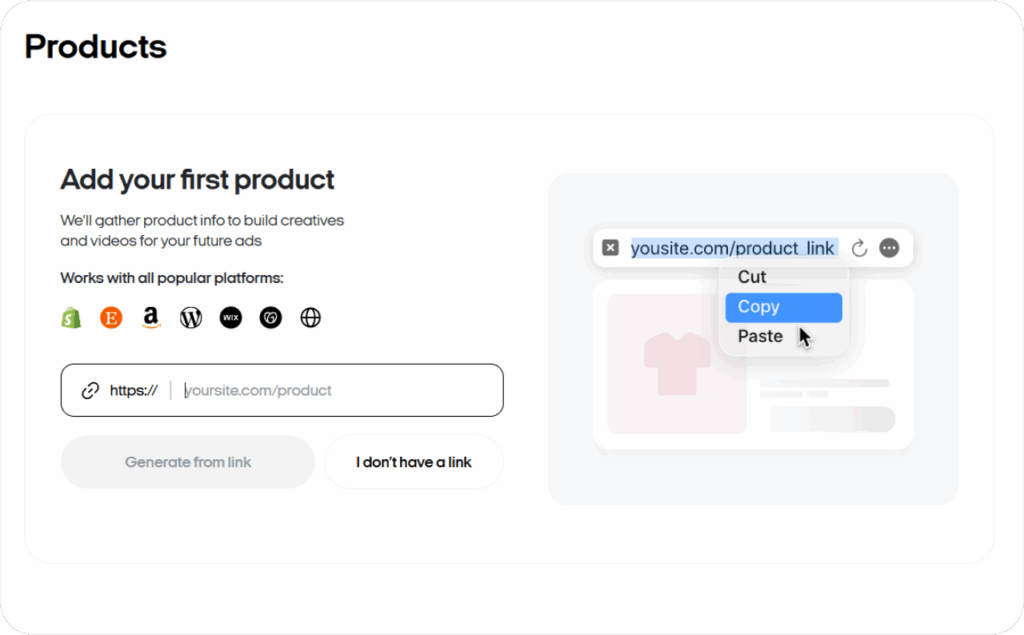
Meanwhile, Meta’s AI Sandbox creates multiple ad styles for Facebook or Instagram, then adjusts bids to raise your ROI without you checking every detail.
Want better targeting? Here’s how AI does it
AI studies browsing habits, shopping history, and page visits. It segments people so your ads match their interests.
That’s how BMW’s Real-Time Billboard Ads wowed drivers by showing messages like “Your car’s maintenance is due”. This campaign caused viral buzz and showed that even a billboard can use machine-learning-powered tricks.
How AI makes creative ads even smarter
AI also fuels dynamic creative optimization. Instead of one stale ad, it swaps images or headlines to suit each viewer.
Coca-Cola’s “Create Real Magic” used ChatGPT-4 and DALL-E so fans could design branded visuals, boosting site traffic with user-generated content.
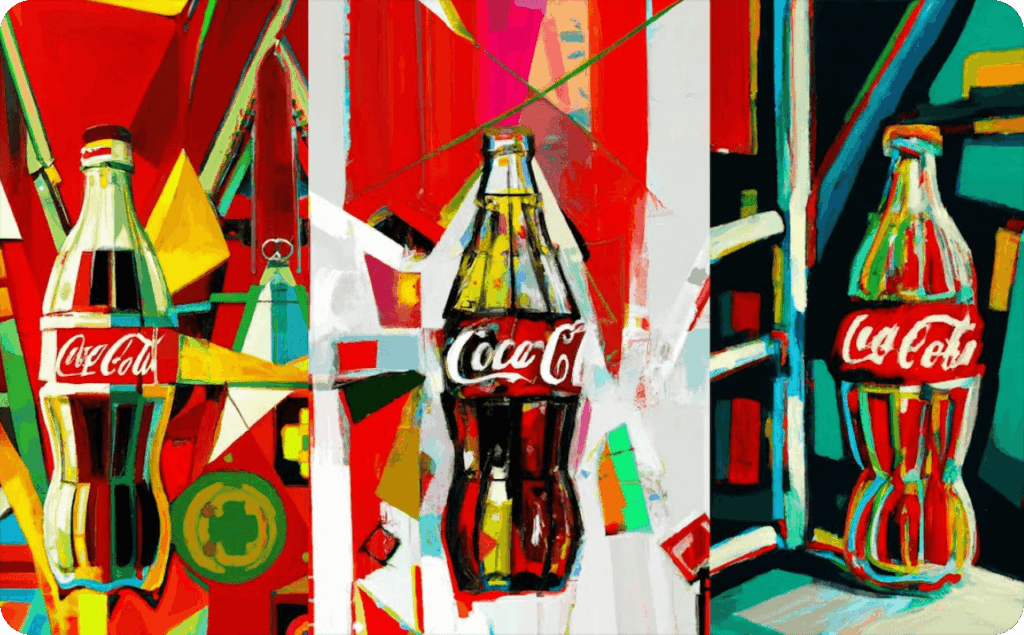
Meanwhile, Nike used machine learning to remix Serena Williams’s famous tennis moments, netting 1.7 million YouTube views with an AI-driven storytelling spin.
Why AI advertising pays off for your marketing
Stats show a 30% rise in conversion rates when AI handles personalization. There’s also a 20% jump in average order value from AI-powered suggestions, like the ones that drive 35% of Amazon’s sales.
Big names spark buzz too. Heinz crowdsourced new ketchup designs with DALL-E, racking up 800 million views.
Netflix relies on AI for 80% of what people watch, hooking viewers with spot-on recommendations.
These examples prove that machine-learning-powered ads do more than save time. They adapt, personalize, and scale in ways that traditional ads can’t. Next, we’ll compare AI strengths to legacy media limits, so you can pick the strategy that fits your business best.
Trying to choose between traditional and AI ads? Here’s what you need to know
Traditional ads reach broad groups but can’t adapt if sales dip or new competitors show up. AI advertising flips the script by using real-time data to customize ads and measure results instantly.
Now, let’s dig into cost and ROI, how personalized targeting works, and why a hybrid approach might give you the best of both worlds.
Which one pays off? Comparing costs and ROI of traditional vs. AI ads
Traditional advertising can cost $20-$30 Cost-Per-Mille. You pay for eyeballs, hoping your message lands. If you buy a local TV spot, for example, you’ll spend thousands before knowing if it brought any leads.
AI ad cost analysis changes that. Tools rely on programmatic media buying and real-time bidding, letting you pay only for effective placements. Jasper saw a 20x return on investment with an AI-powered workflow that dropped low-performing spots fast.
Imagine a local coffee shop doing the same. Instead of dropping $2,000 on a generic billboard, you spend half that on an AI-driven marketing campaign. You track each click, see who buys, then cut what doesn’t work — all mid-campaign. That’s budget efficiency in action.
Want smarter targeting? Why AI personalization leaves traditional ads behind
Picture running a radio commercial for athletic gear. You hit sports fans, but also random listeners who don’t need running shoes. That’s a waste you can’t get back. With AI personalization benefits, you target people who actually browse, click, or buy gear like yours.
AI uses behavioral targeting and audience profiling to show dynamic creativity. Suppose you run a local gym. You display a “Get 2 Free Classes” ad to someone who searched “weight loss tips,” or a “Family fitness package” to a user who visited your kids’ sports blog.
This hyper-segmentation can spread across channels, also known as omnichannel integration. That means every platform, be it an email, social or display, adapts in real time to who’s watching.
Creativity vs. Data? How to blend human storytelling with AI precision
Many traditional ads lean on emotional resonance, like a heartfelt TV spot or a clever jingle. These can inspire brand loyalty, but they don’t shift if trends change or a new product launches. AI advertising adds algorithmic assistance, testing visuals or headlines to find which version clicks with your audience.
Imagine you’re promoting a new coffee flavor. You brainstorm a fun tagline. Then you let AI test different color schemes, calls-to-action, or video clips.
If one design drives a 15% higher click-through rate, you focus on that winning approach. This hybrid marketing strategy marries human imagination with data-driven decisions. You keep brand authenticity while adapting quickly, ensuring you never miss a trend, or a sale.
Now that you’ve seen cost, personalization, and creative benefits, let’s move on to how you can actually put AI into play — starting with the tools and steps for a smooth launch.
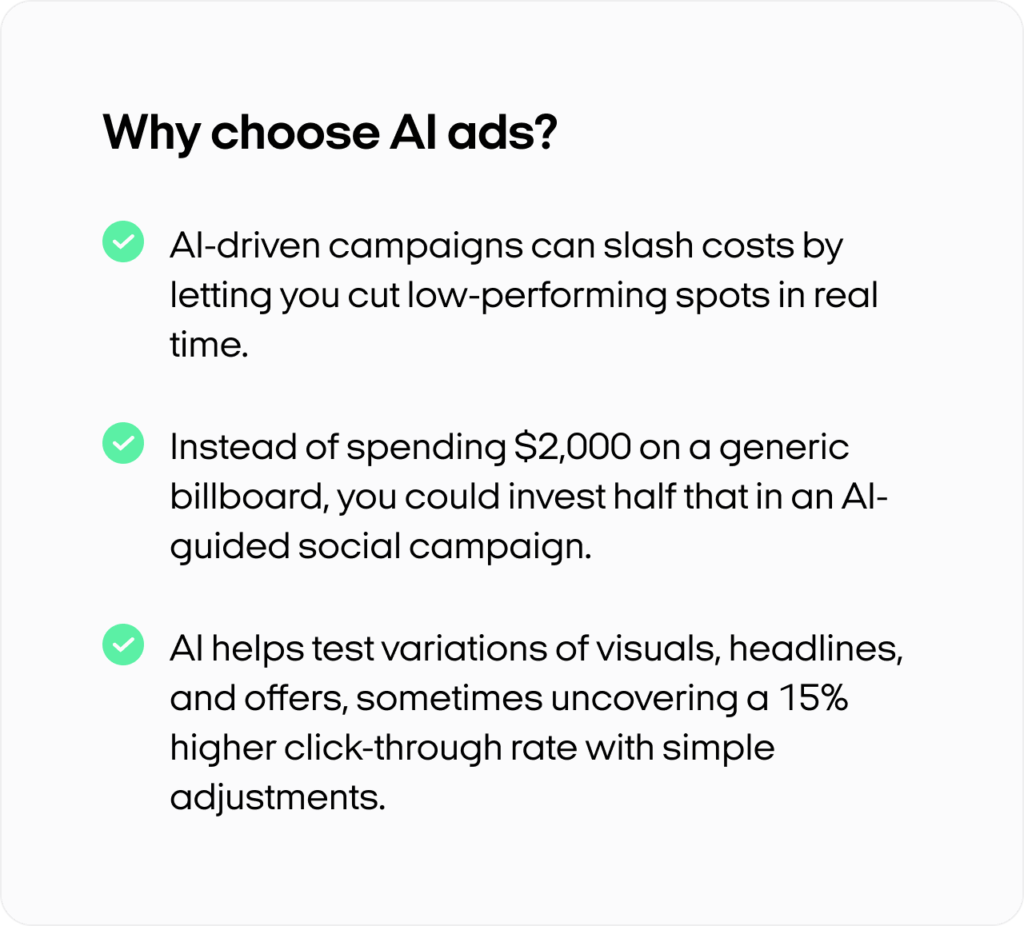
Implementing AI ads and meeting key challenges
How can you harness AI ads while keeping your audience at ease and staying on the right side of privacy laws? In this section, we’ll address top AI implementation challenges. Manage these issues early, and you’ll protect both your budget and brand trust.
Understand technical and ethical considerations
A major worry is user confidence in their safety. Forbes claims, over 55% of people feel uneasy about AI in diverse markets, so a privacy-first approach is vital.
Studies show 60% of diverse users spot AI-generated content quickly, which can spark backlash if they suspect hidden data practices.
That’s why GDPR and CCPA require clear consent policies. If your AI tool mishandles personal info, you risk legal trouble and a damaged reputation.
Brand safety is another concern. Some programmatic platforms might place ads on questionable sites unless you enable risk mitigation.
Also consider cultural nuances — jokes that work in one region could offend in another. Watch for ad fraud by monitoring your analytics dashboard for odd spikes in traffic.
One brand faced negative feedback when an AI chatbot told jokes in multiple languages but failed to adapt them locally. They fixed this with disclaimers and location-based filters, ultimately boosting conversion lift after two weeks of testing.
A 5-step roadmap with best practices on implementing AI ads
Step 1: Clean and segment your data
Before you dive in, make sure your CRM is up to date. Remove old records, fix broken tags, and define customer segmentation rules. Data that’s messy or incomplete can mislead your AI, causing wasted spend and poor targeting.
Step 2: Compare programmatic platform options
Pick a DSP or programmatic exchange that fits your goals and budget. Look for risk mitigation tools that block suspicious sites.
If you want best practices for AI advertising analytics, choose a platform with a robust ad analytics tool, so you’ll know where every click and conversion comes from.
Step 3: Launch a small pilot campaign
Start with a narrow test to spot errors early. Suppose you run a local gym. You test two AI-driven social ads: “Two Free Spin Classes” vs. “Join a 7-Day Challenge.”
After a week, you notice the “7-Day Challenge” ad delivers a 25 percent boost in sign-ups and 15 percent lower CPC. That’s data-driven optimization at work.
Step 4: Monitor brand safety and performance
Watch your dashboard for signs of ad fraud or suspicious traffic spikes. If something looks off, pause that channel or tweak targeting. Also remember user privacy: be transparent about data usage, and ask for consent if your AI tool personalizes messages or uses chatbots.
Step 5: Scale and refine
If your pilot performs well, expand to more channels, like email, display, or in-store screens. Cyber Monday 2024 saw a 1,950 percent jump in AI search referrals, per The Verge, proving that an omnichannel approach can pay off big.
If you see some ads flop, adapt quickly. AI thrives on feedback, so each failure is just another data point for creative variant testing or better audience alignment.
Ready to see the future trends in advertising?
You’ve tackled AI adoption and major compliance headaches. Now let’s look ahead to what’s next. New tools like AR, VR, and advanced neural networks may turn ads into seamless conversations rather than disruptions.
Neural networks and predictive modeling will predict shoppers’ next move
One of the most exciting changes lies in neural networks that track consumer behavior. These systems study your visitors’ browsing history, in-app moves, or purchase records to guess what they’ll want next.
Some brands now use AI-generated content to shift headlines and images in real time, often boosting click-through rates by 10% to 20%. This predictive targeting might soon lead to experiences, where a product, price, and buy button appear right on a search results page.
Immersive AR and VR ads create a new way to engage
Most people crave more than boring banners. AR and VR ads turn your website or app into a hands-on demo.
IKEA offers an AR feature that shows how furniture would look in your home, cutting confusion and returns. Sephora tested a VR makeup mirror so customers can try products virtually.
These interactive AI-based brand experiences rely on real-time personalization and predictive modeling, making the journey feel natural. As hardware gets cheaper, more brands will follow suit.
Zero-click will change conversational marketing
Zero-click ads already pop up on some search results, giving users details right away. Experts say this trend may grow if people love frictionless buying.
Conversational marketing, like AI chatbots, could push this further. Imagine a home voice assistant that asks if you want the same laundry soap you bought last month. You confirm by speaking a quick “Yes,” and that’s it, no website needed.
Critics worry about “closed platforms,” but easy checkouts may lure both brands and shoppers.
Multi-touch attribution will matter over the next 5 years
As ads get more immersive, multi-touch attribution becomes crucial. You need to see which pieces — AR demos, social ads, or app prompts — drive real sales.
AI ties these signals together, giving you a complete view of each buyer’s path. Nike tested programmatic advertising plus VR previews, then used personalization engines to follow up with relevant product lines. They saw a 20% bump in conversions from people who interacted with VR first.
In the next five years, merging real-time data and predictive insights with flexible creative will likely define ROI-focused campaigns.
Choosing between AI and traditional ads: Which one fits your goals?
Have you spent money on ads that never seemed to pay off? That frustration often pushes business owners toward AI advertising for precise targeting and real-time data. Yet traditional ads still build trust and local presence.
When to favor traditional ads
Traditional channels can boost brand credibility if your audience isn’t always online. A newspaper ad or billboard might catch people who prefer offline media and value that personal touch.
This strategic advertising decision can strengthen business goals like neighborhood awareness or community ties.
When AI takes center stage
If you want, for example, better ROI from UGC ads and frequent tweaks, AI ads let you refine each impression. They show who clicks, who buys, and when to change course.
AI retargeting can bring back visitors who abandoned their carts, driving steady conversion growth. This comprehensive approach uncovers hidden segments and keeps your outreach agile.
Why and when to blend both?
Some brands need broad reach and digital accuracy. You might run a TV spot for bigger visibility, then integrate offline and AI campaigns to retarget viewers online.
That holistic strategy meets people at multiple touchpoints and reinforces your message. One local study showed companies mixing offline and AI saw a 15% rise in repeat sales within six months — a proof that synergy pays off.
Action steps for a long-term vision
Start by assessing your budget and audience preferences. Offline ads help you appear familiar and credible, while AI ads give you deep data for targeting.
Blending both can offer the best of each world. Stay open to user feedback — build on what works and drop what doesn’t. With a long-term vision rooted in both reach and precision, you’ll set your brand up for lasting success.
Also recommended

